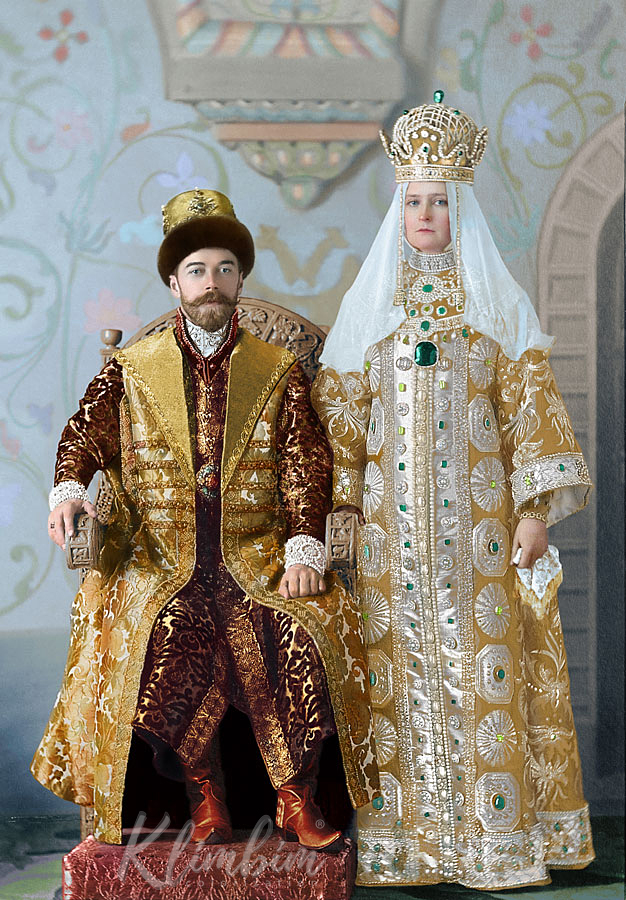
These portrait photographs of Russia’s ruling Romanovs were taken in 1903 at the Winter Palace in majestic. St. Petersburg. Knowing what was to follow, the venue was apposite. St Petersburg is the city Christopher Hitchens called “an apparent temple of civilization: the polished window between Russia and Europe… the scene of near-continuous murder, massacre, assassination, terror, famine, and war. There isn’t a boulevard or square that hasn’t been the witness to events that harrow up the soul and freeze the blood.”
In 1918, Bolshevik officials executed the ex-Emperor and his family.
Czar Nicholas II and his 390 guests partied for 2 days. Day one (February 11) saw dancing, music and food. With the guests loosened up and rested, day 2 (Feb 15th) featured a masked ball. There was a surfeit of sexual excess, debauchery and entitlement for a family whose absolutist rule was hailed by the country’s grateful serfs – they dubbed the Czar ‘Little Father’ – and supported by a complicit church which declared Romanov blood sacred.
Outside the mood was dark. The Grand Duke Alexander Mikhailovitch dubbed the event “the last spectacular ball in the history of the empire… a new and hostile Russia glared though the large windows of the palace… while we danced, the workers were striking and the clouds in the Far East were hanging dangerously low.” The old autocracy would soon be washed away, replaced by a new order rushing to reestablish Russia as a world power and today’s modern hankering for imperial nostalgia.
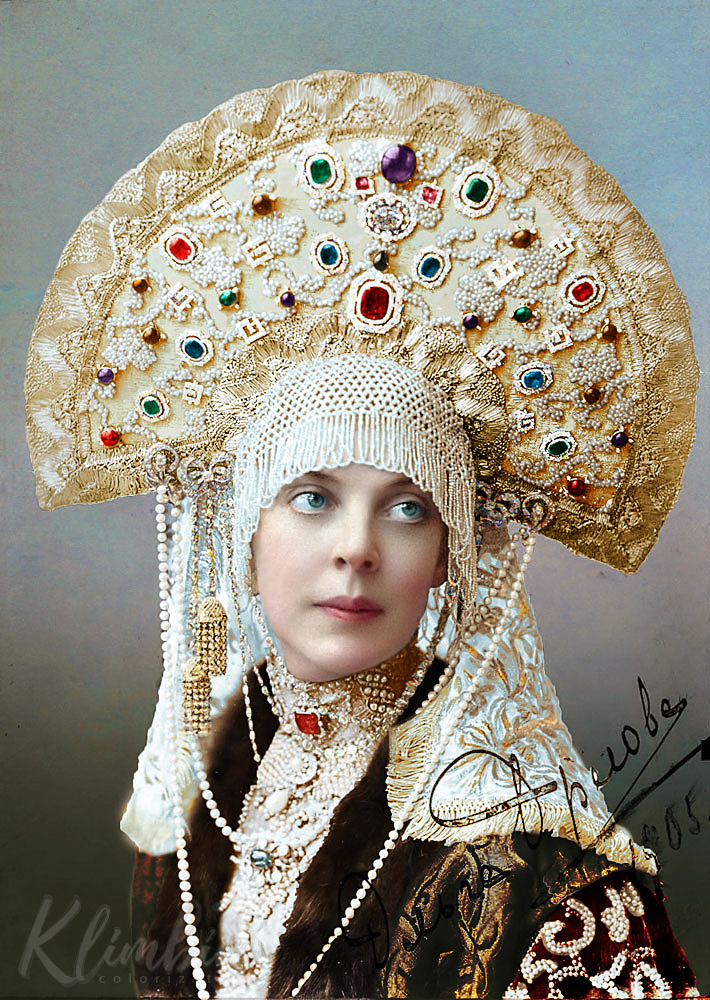
Princess Olga Orlova in Masquerade Costume for the Ball
“In Russia the government is autocracy tempered by strangulation,” quipped the French woman of letters Madame de Staël. It was a dangerous job. Six of the last twelve tsars were murdered—two by throttling, one by dagger, one by dynamite, two by bullet. In the final catastrophe in 1918, eighteen Romanovs were killed. Rarely was a chalice so rich and so poisonous.”
― Simon Sebag Montefiore, The Romanovs: 1613-1918
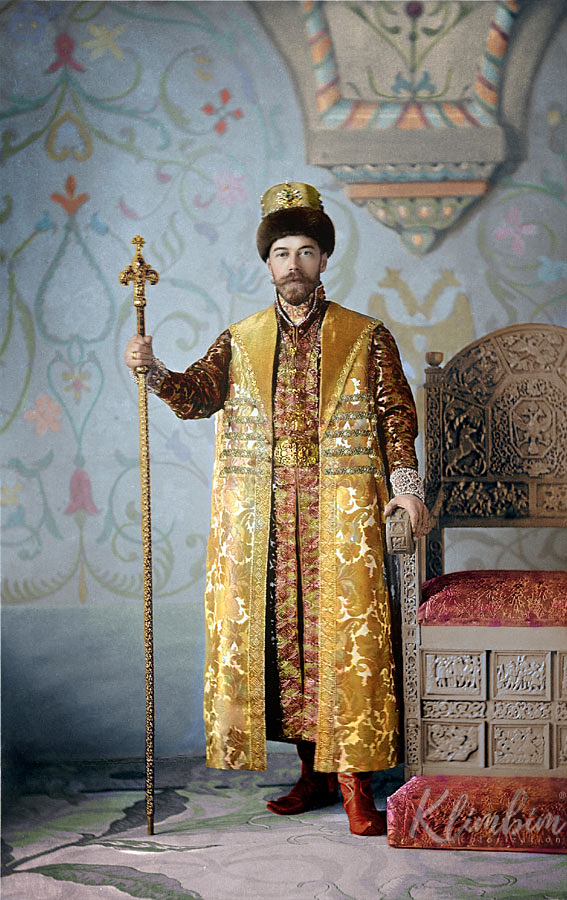
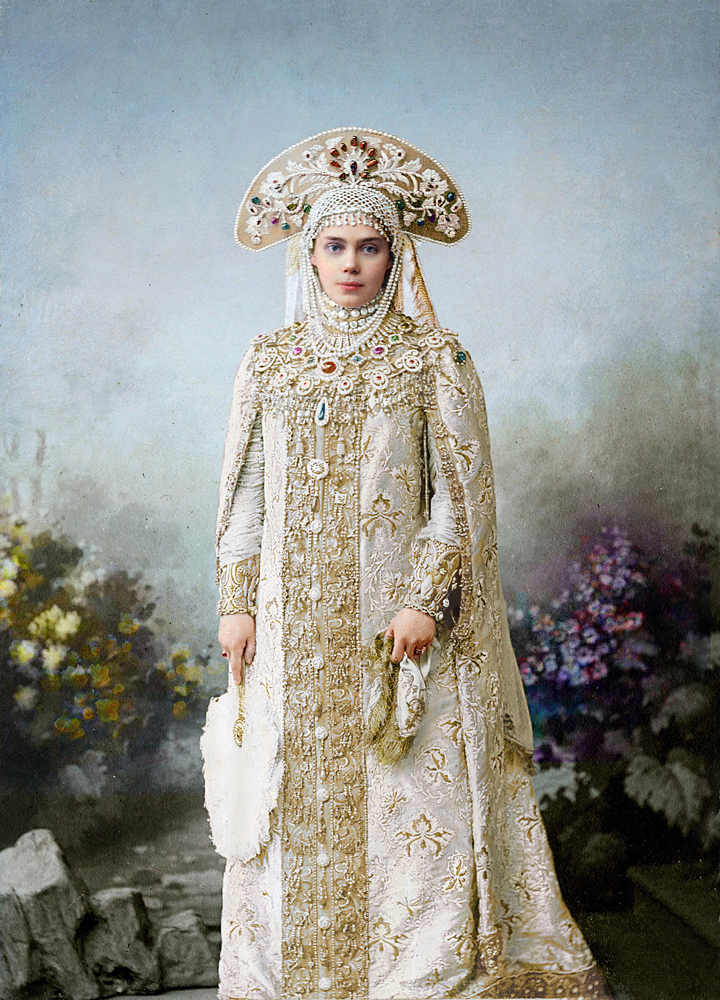
Grand Duchess Xenia Alexandrovna of Russia, 1903

Alexandra Feodorovna, Costume Ball 1903

Zinaida Yusupova

La Comtesse Karlow, nee Vonlarsky (Femme de boyard du XVII siecle)
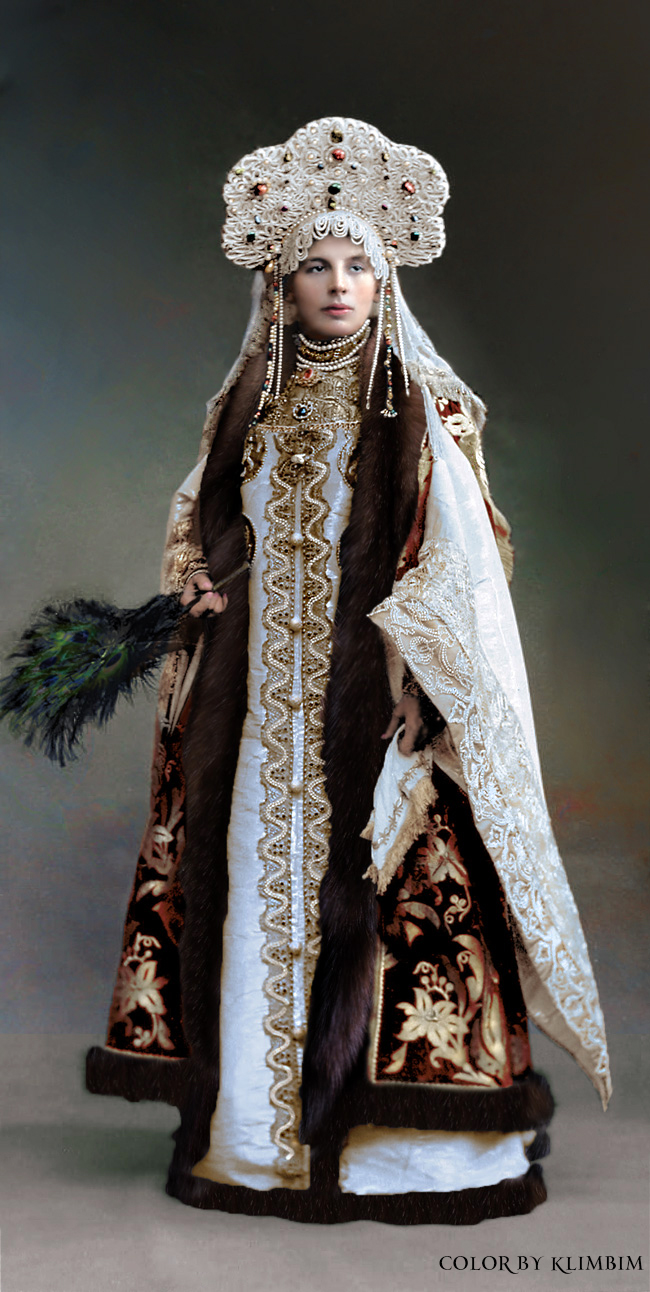
La Comtesse Fersen, nee Princesse Dolgorouky (Femme de boyard du XVII siecle)
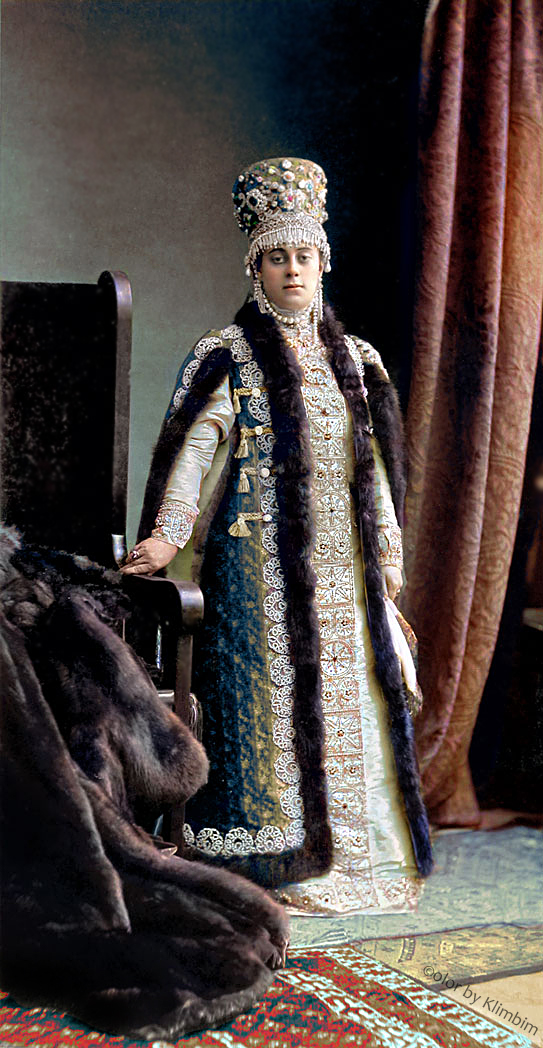
La Comtesse Orlow-Davydow, nee Zographo (Femme de boyard du XVII siecle)
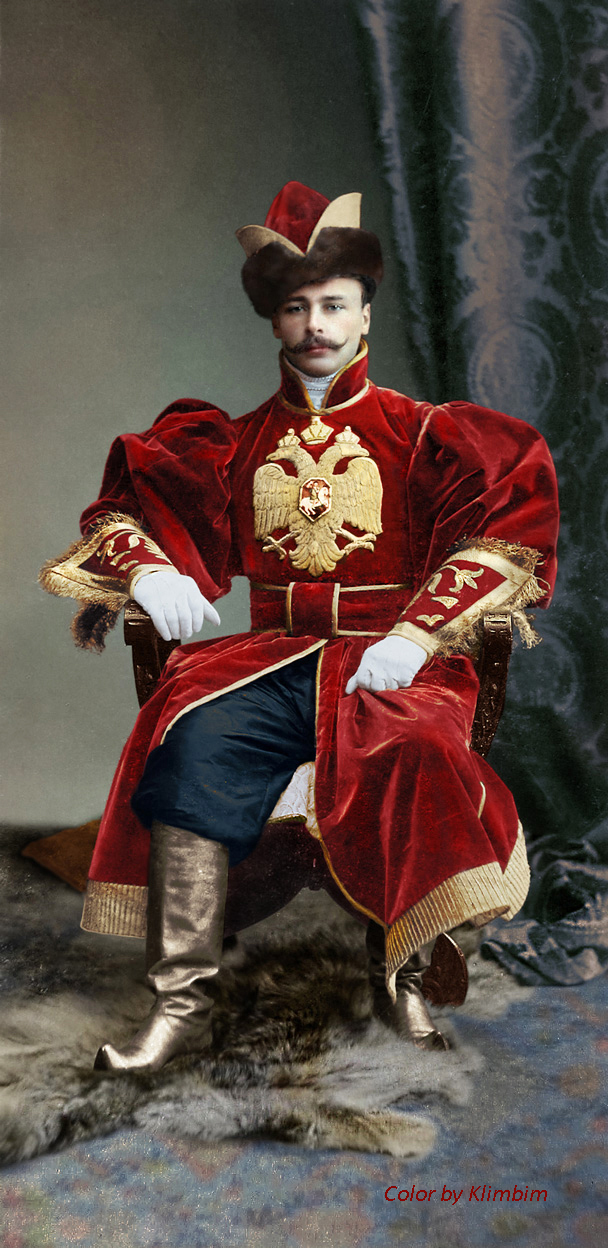
Cornette Kolioubakine
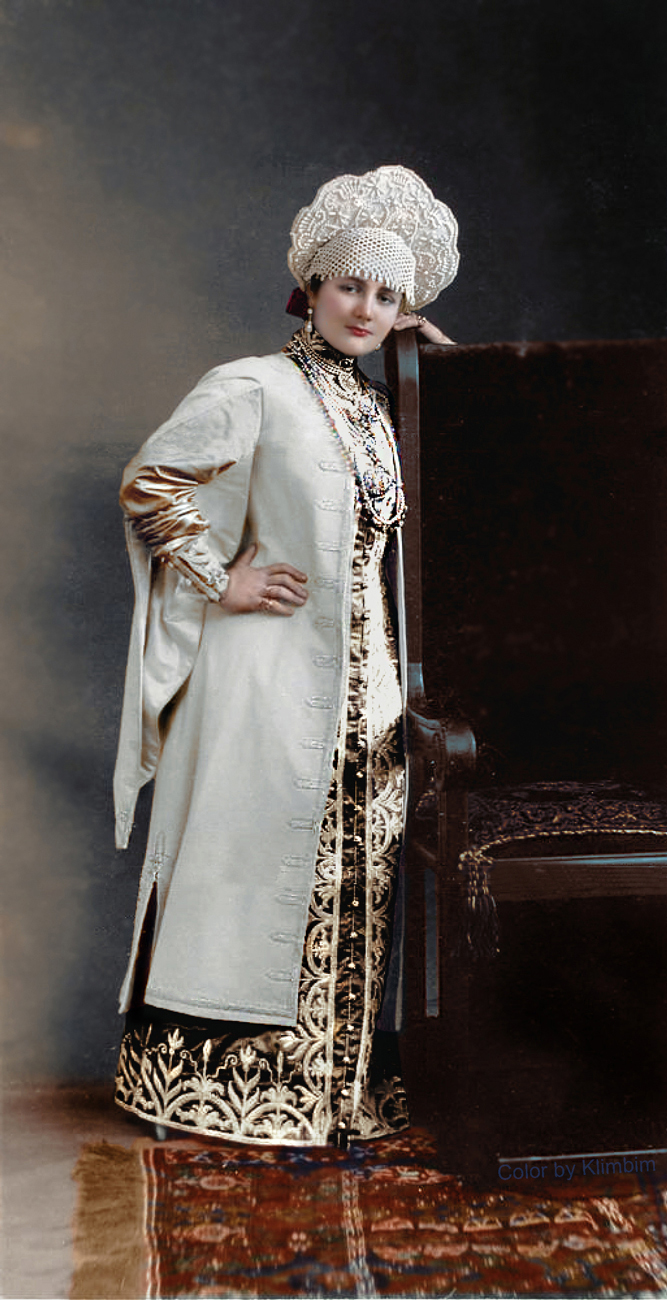
Mademoiselle Dorothee Bibikow, 1903
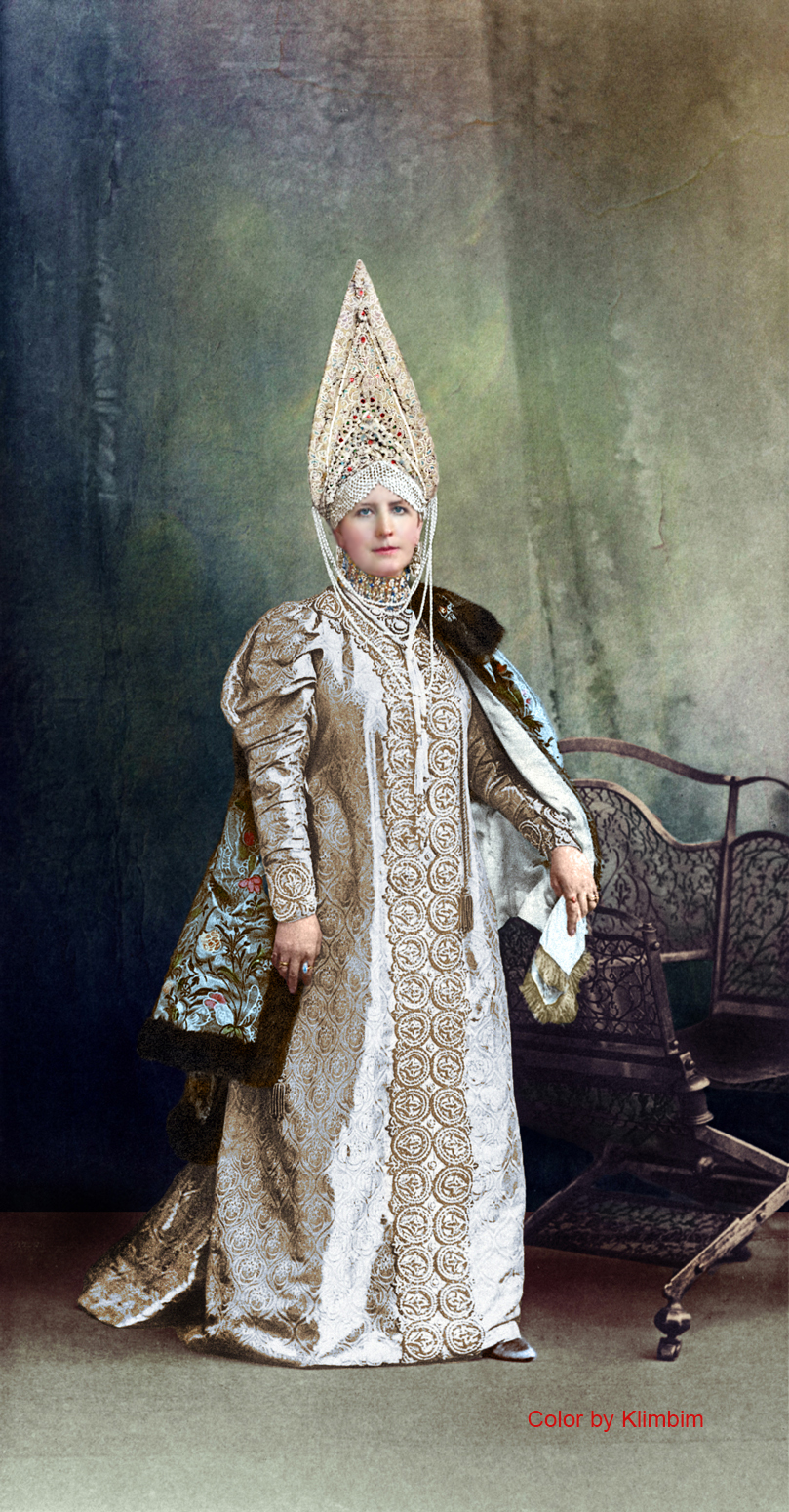
La Comtesse Keller, née Princesse Schakhovskoy (Femme de boyard

Mademoiselle Alexandrine Taneiew
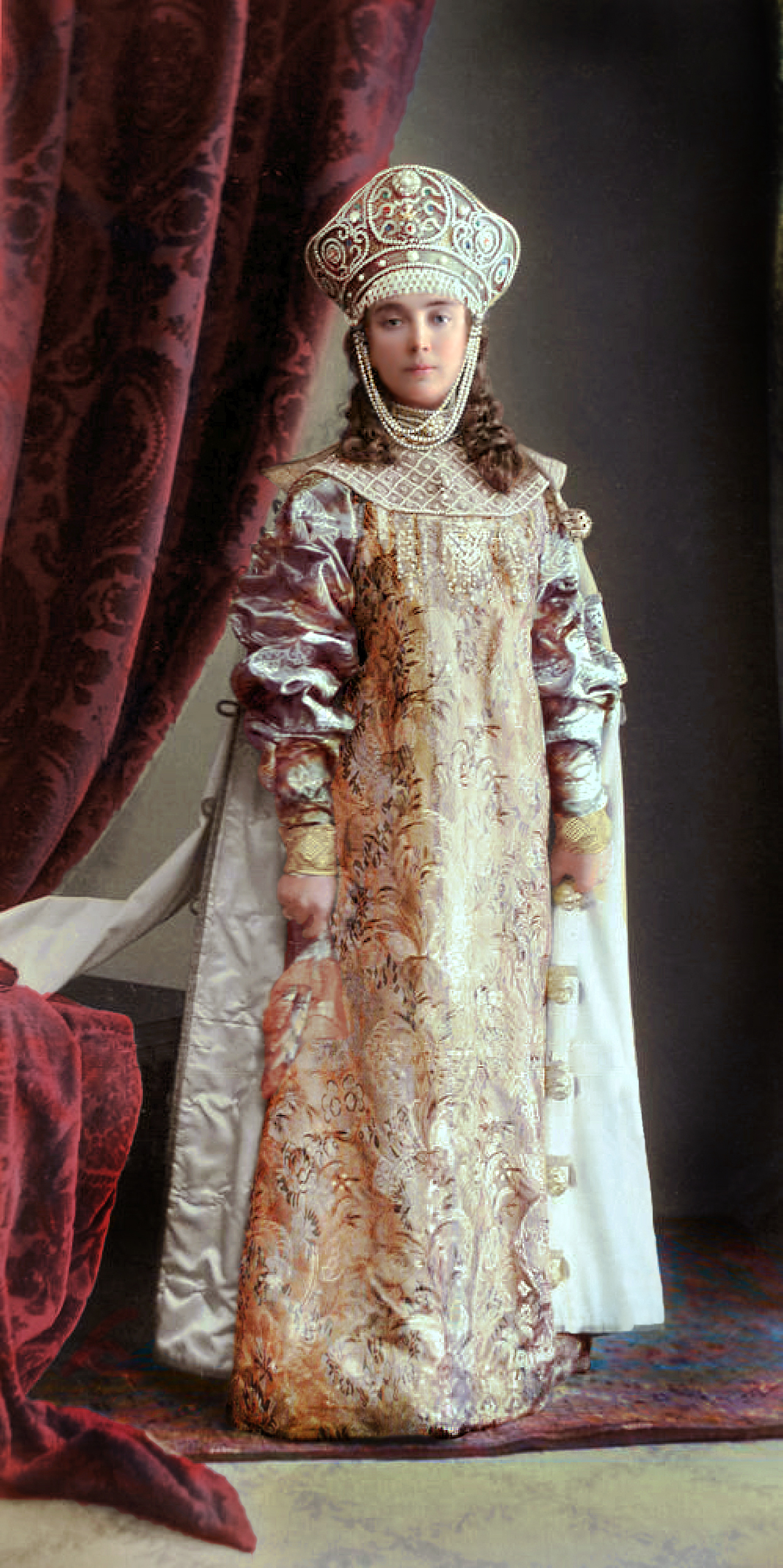
La Princesse Elisabeth Obolensky, Demoiselle d’honneur de Sa Ma
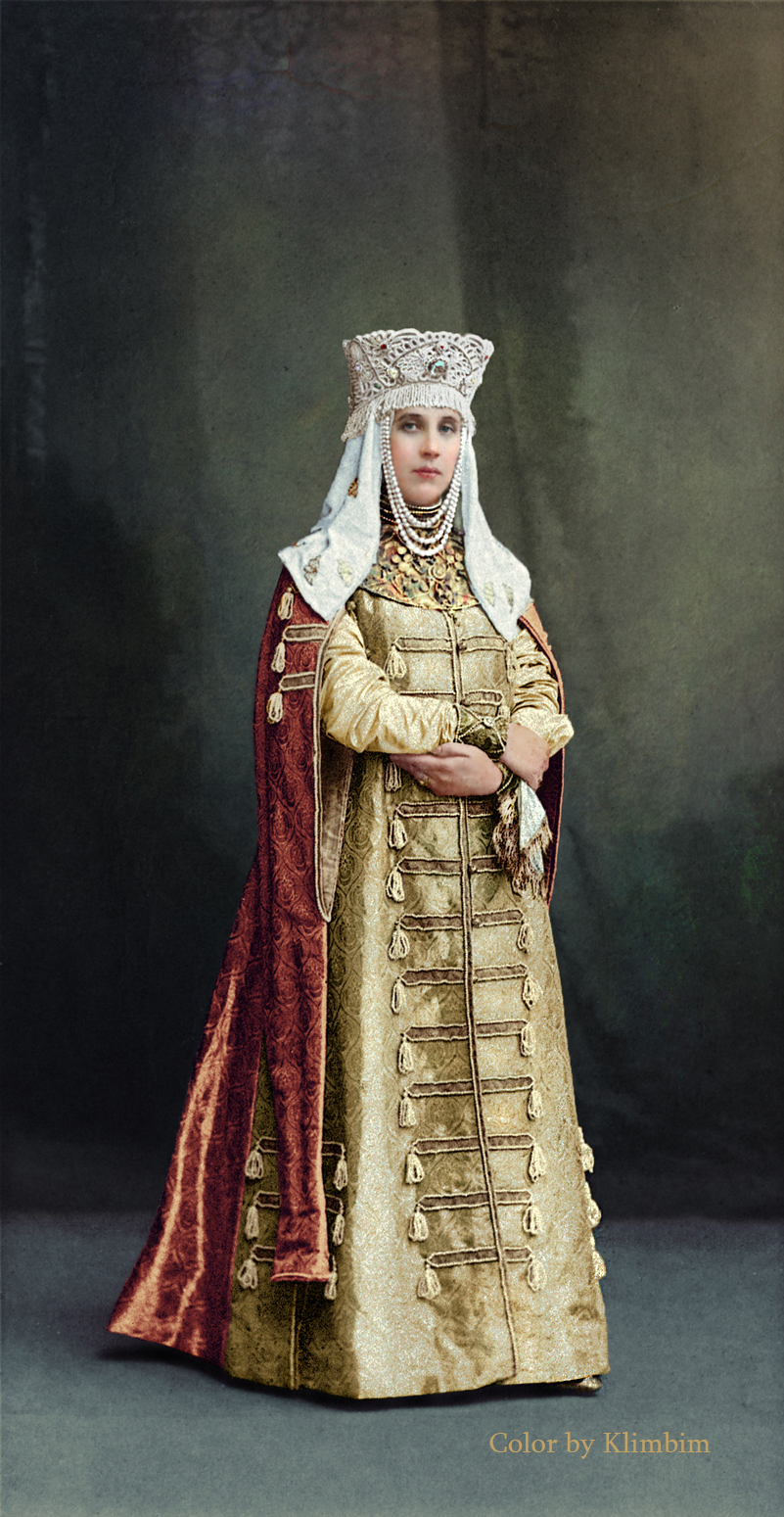
La Comtesse Elisabeth Moussine-Pouchkine,
née Comtesse Capnist
(Femme de boyard du XVII siècle)
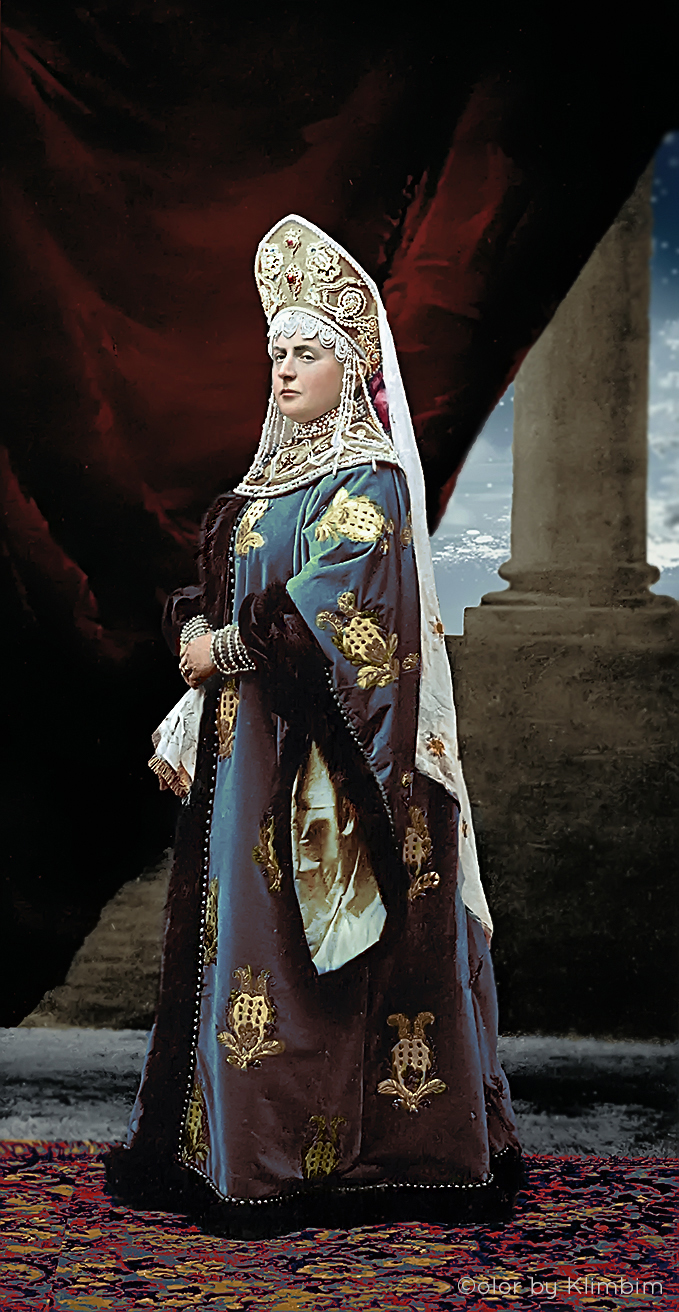

La Princesse Youssoupow
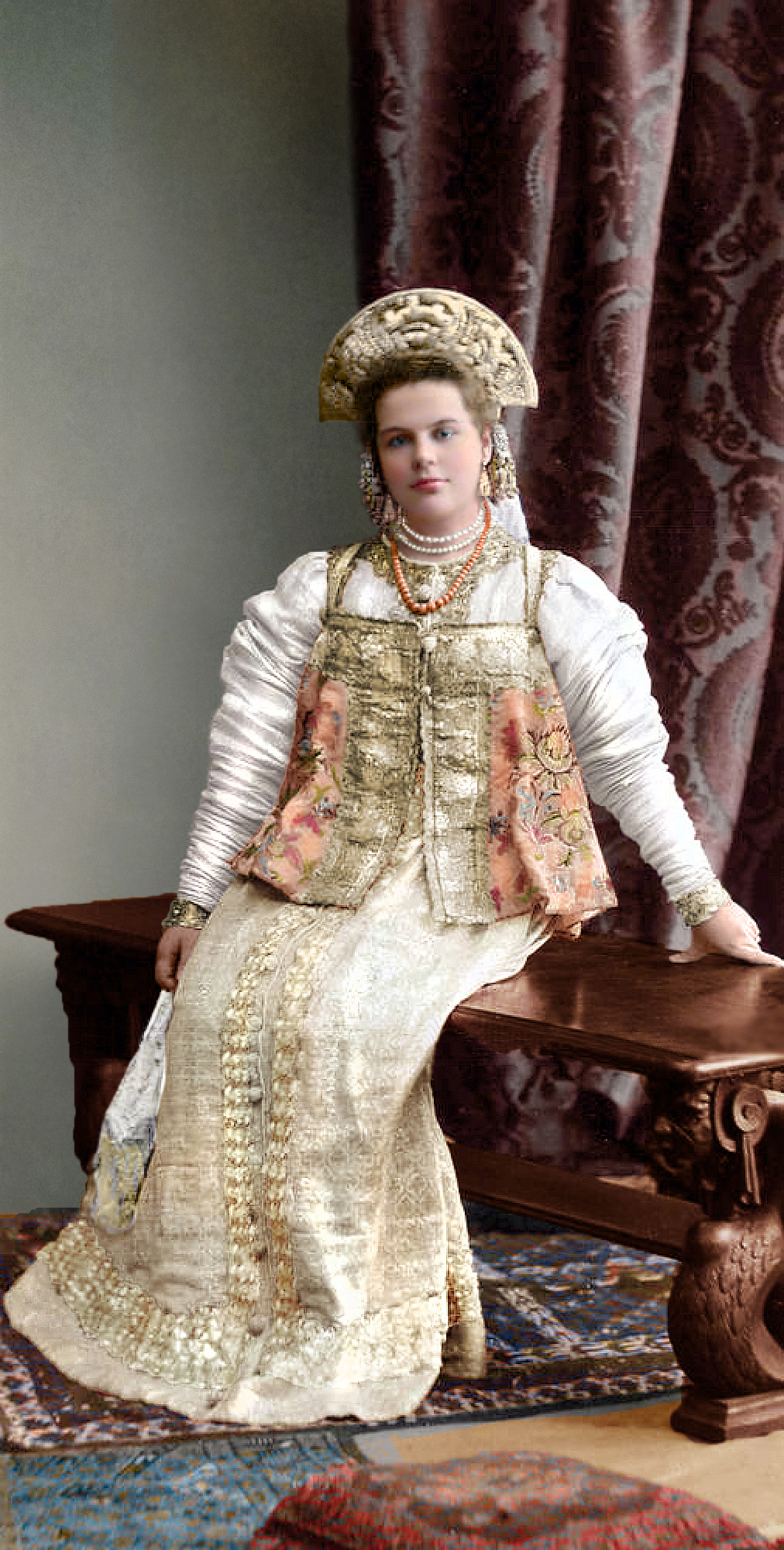
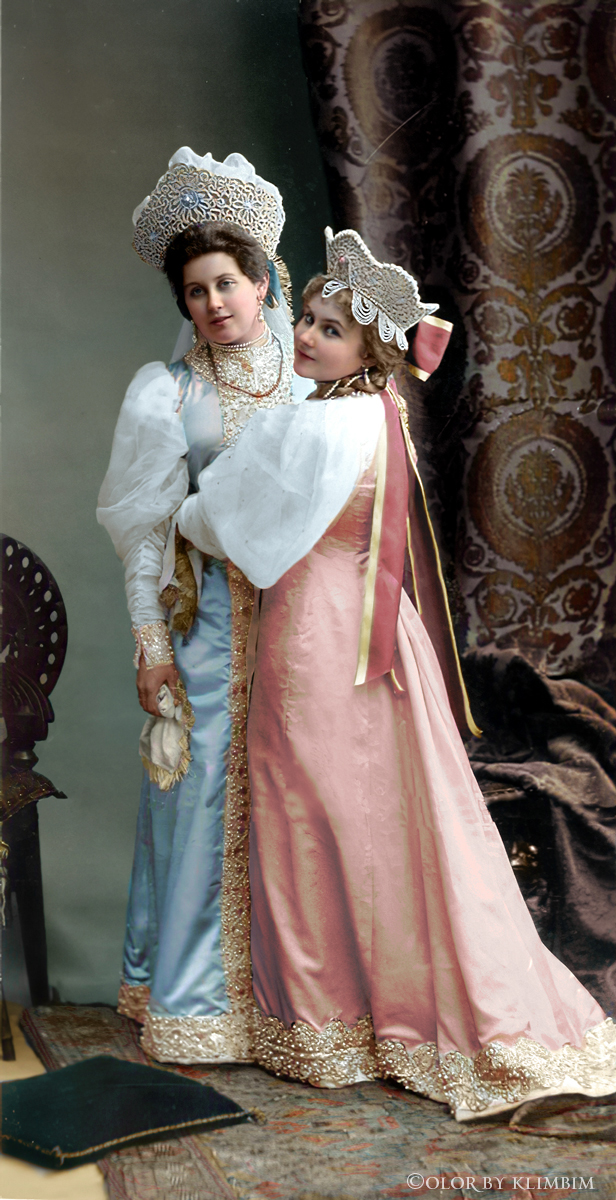
Anna Taneeva (Vyrubova) with sister
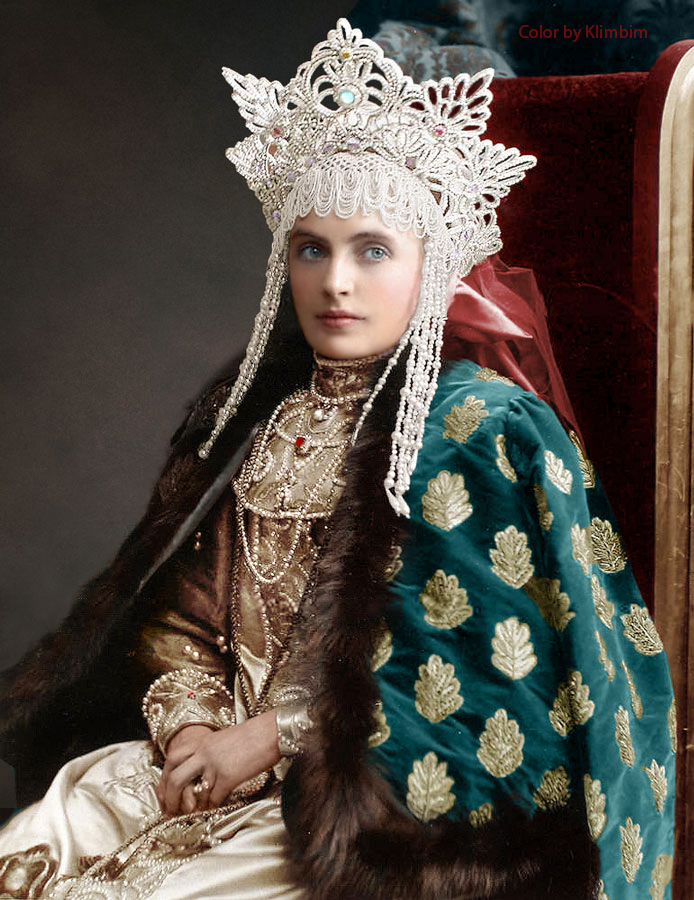
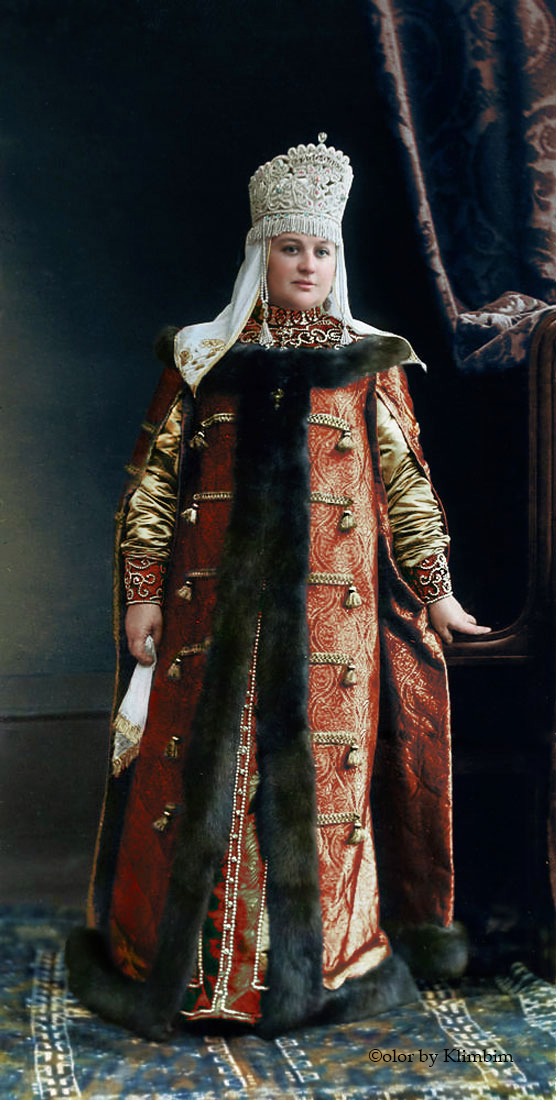
S. A. S. la Princesse Galitzine, née Comtesse Moussine-Pou
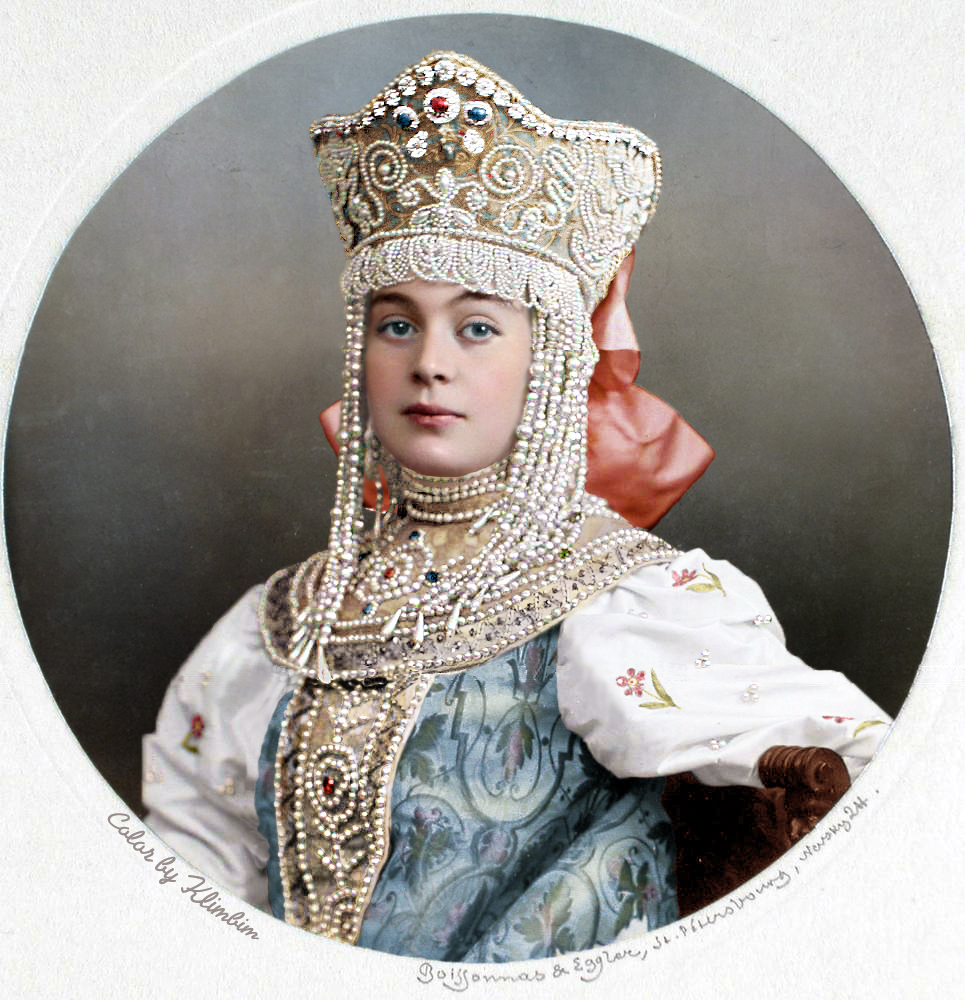
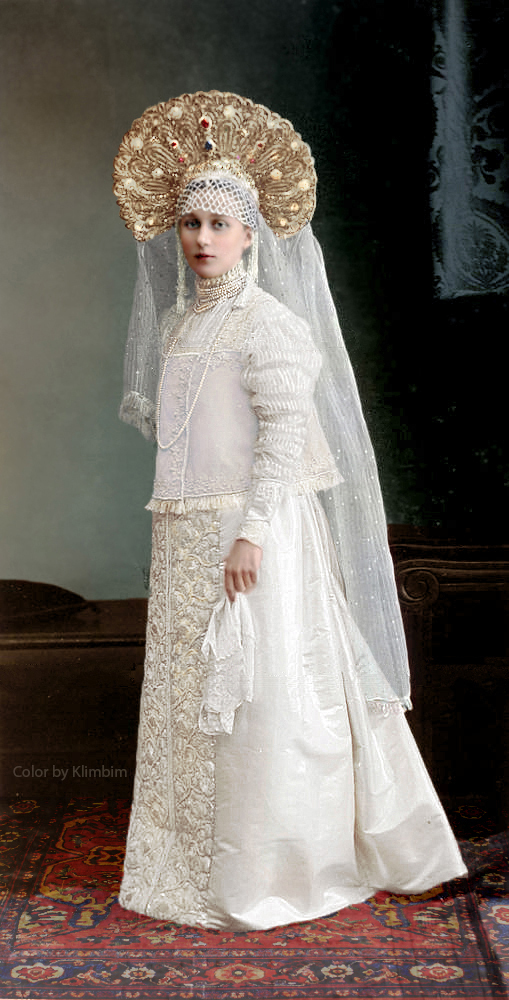
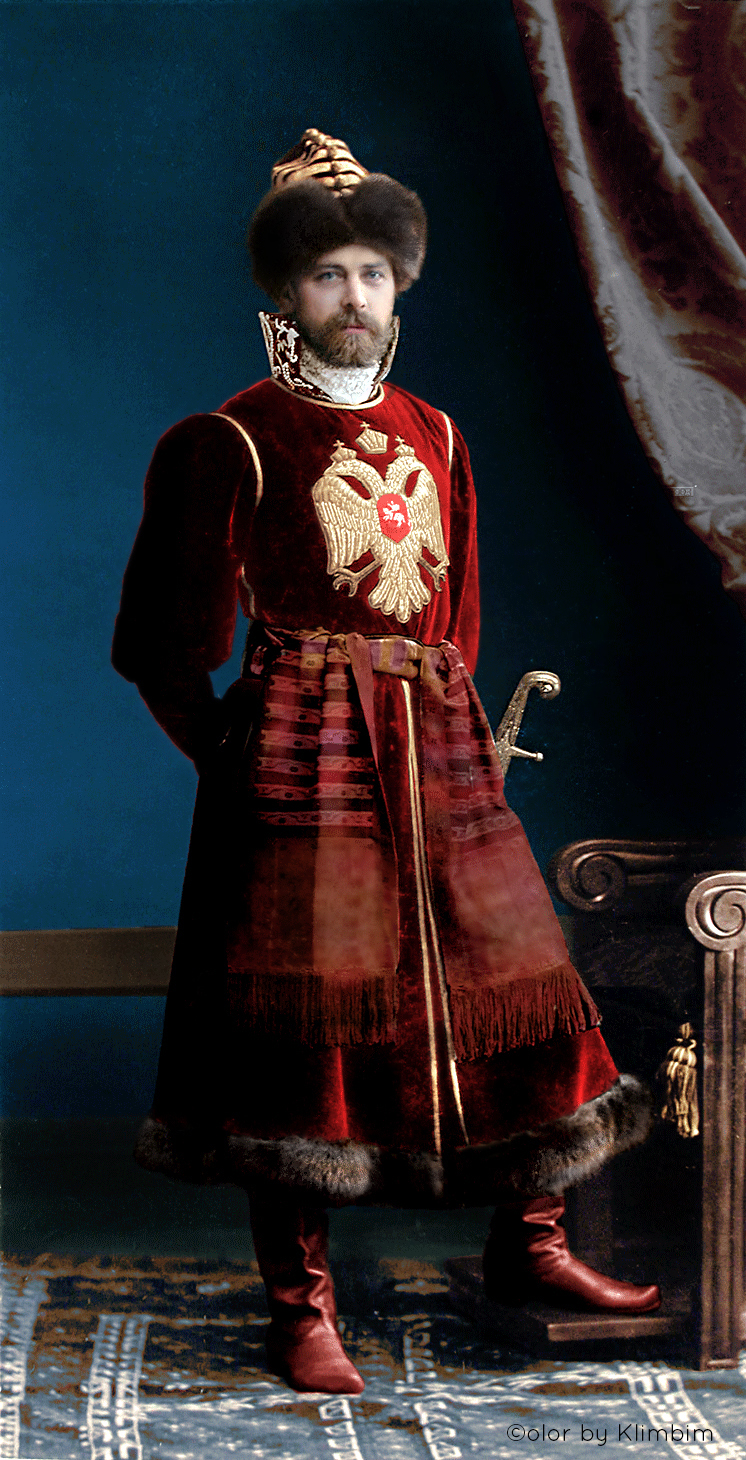
S. A. S. le Prince Dmitri Galitzine, Chef de la Venerie Imperial
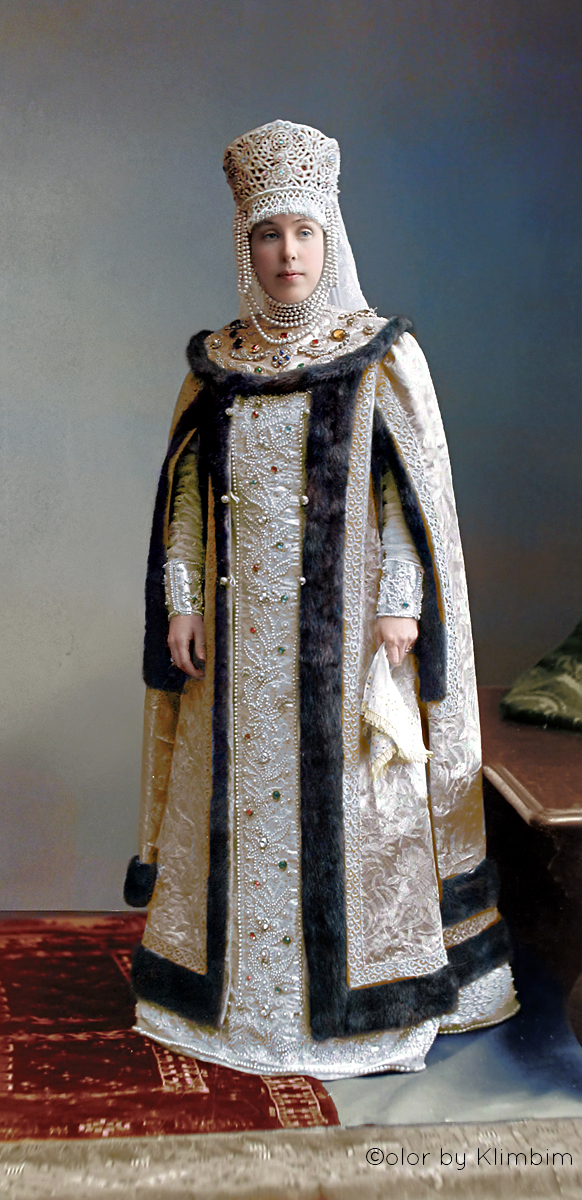
Madame Bezobrazow, nee Comtesse Stenbock-Fermor (Femme de boyard
These color images were created by Olga Shirnina, whose colorized photographs of Russians in World War 1 and World War 2 bring the past to life.
Lead Image: The last emperor of Russia Nicolas II dressed in the golden brocade of 17th-century Russian tsar Alexey Mikhailovich. The Empress Alexandra Fedorovna appears in the raiments of the first wife of Alexey Mikhailovich, Empress Maria Ilinichna – a brocade dress decorated with silver satin and pearls topped by a diamond and emerald-studded crown. Empress Alexandra Fedorovna wore a huge emerald. All the jewellery was chosen by court jeweller Carl Faberge.
Would you like to support Flashbak?
Please consider making a donation to our site. We don't want to rely on ads to bring you the best of visual culture. You can also support us by signing up to our Mailing List. And you can also follow us on Facebook, Instagram and Twitter. For great art and culture delivered to your door, visit our shop.

